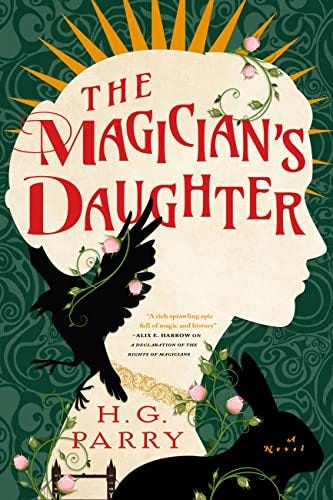In my last newsletter I spoke of the liminal space writers often find themselves; that place of emptiness which comes after finishing a big, heart- and mind-consuming project and we once again find ourselves facing a blank page. A new mountain to conquer, a new demon to banish (aka: the next book to write).
This is the place I’d been lurking in after I sent my latest book to my agent. It’s a tough and uncomfortable place to be. With it came the sense of being unmoored, no longer tied to the book I’d been working on for so, so long. Soon, my insecurities were whispering in my ear, insisting that my last book was a fluke; a one-time achievement I had little hope of repeating. I could’ve chosen to listen to those whisperings, to sink in despair at having to once again create a story from scratch. If I had, this would be a very short newsletter and the next one would probably be sent from a cave somewhere, where I’d move in as the local hedge witch specializing in wild-foraged teas or something.1
Fortunately, another new, shiny book idea moved in pretty quickly. This is one I mentioned briefly before; the scary, out-of-my-comfort-zone project that somehow invaded my dreams and nudged me every hour of the day until I found the courage to start writing it down. I’m very excited about this new book idea and truly can’t wait to talk about it more. For now, I’m cradling it in my palm, allowing it to grow it until it isn’t quite so delicate and frail.
Before it can evolve into what it’s meant to be, I need to find its heart.
on hearts
I’m going to go a little into my personal writing process here. As with all craft advice, what works for me might not work for everyone. Take what inspires you and set aside the rest.
For me, stories need a heartbeat—otherwise known as an emotional pulse. Take me on a ride with my emotions! Make my heart flutter or swoon or drop to the toes of my boots! Let me feel the impact of the characters’ roller-coastering emotions! I’m the kind of reader who needs to make that emotional connection to the characters, or at least understand them and get what drives them in order for me to stick around to find out what happens next. The human connection is such a vital component to storytelling. If a story lacks that heart, I’m not usually willing to read through hundreds of pages to get to the ending.
To find the heart of the story I’m setting out to write, I first figure out the emotional arc I want to explore. What deep, emotional wounds does my MC carry? In which ways are those wounds re-opened or challenged? How will the overarching plot be driven by the MC’s choices? Consider this: the emotional arc of a story is just as important as the arc of the plot, and in many cases will be the driving force of what happens in the book. Why? Because the main character’s (emotionally-driven) choices should be what propels the narrative. Things shouldn’t happen to the character(s)—they should happen because of the choices they make.
A big part of this step is figuring out how my MC will react to emotional punches and be challenged by them, along with all the ways they must face their deep-rooted misbeliefs (which are usually linked to an emotional wound) and fight to break those barriers holding them back. And, importantly, what caused those misbeliefs in the first place.
I have my own pocket full of emotional wounds to draw from—challenges I’ve personally faced and barriers I’ve had to overcome, myself. With every project I write, I endeavor to explore those topics thoughtfully, knowing that I’m not alone in struggling with these issues. My goal is to make a connection to readers who also carry these wounds. To help them feel seen; to show them that they are not alone.
For this new project, I’ve found the heart of the story. It deals with loneliness and the misbelief that it’s better to avoid connection with others than face heartbreak. It’s a misbelief many of us carry, and one that fits neatly within the story I’m setting out to tell.
Now that I’ve found the heart of my story, the real fun begins.
This is the stage of story-creation I love most—when the initial concept manifests and your mind spins down infinite paths of possibility. It’s a time to explore and research and watch in wonder as ideas zip around while new characters spring to life, plot points blossom, a mystery presents itself, and the rules of magic take shape—all within a fresh, exciting, and as-yet unexplored world. A world your main character will be challenged by in multiple ways.
Which brings me to the second topic of this newsletter. The shiny idea has firmly planted itself in my mind and I know the emotional arc my main character must travel, but the story hasn’t taken solid shape quite yet. I hold its heart in my hands and have a loose idea of what the story is about, but everything else is in a dream-state. I’m a dedicated outliner, having learned that pantsing my way through a novel2 is not the best method for me, personally. So I’m at the stage where ideas are going off like fireworks and my characters are already getting into mischief, but I still don’t have a strong grasp on the story as a whole. The way in which I get there, to that nailing down of ideas and plot points into a working outline, is this: I start by writing wish-scenes.
wish-scenes
Wish-scenes are pretty much what they sound like—they’re a wish list of scenes you’d love to include in your story. Wish-scenes can be as simple as a list of locations or dramatic moments you want to showcase, to fully developed scenes where something ~*important*~ happens (or something unimportant happens but it is vital to your character’s emotional arc in some way). Or they could be a list random things that set your creative juices flowing and you’re certain they must be included in the story somewhere. It’s your list of wishes—you can do with them as you choose.
Writing these wishes is how I get to know my characters and gather information about the world and the story’s main conflicts. It’s through these scribblings I start feeling my way through the plot and begin developing the mystery my MC will have to solve. Sometimes a starting point comes naturally in this process. At least, a starting point for now. The important thing is to have this list of ideas at hand, so when you reach for them they are at your fingertips. With them, you can un-stick the sticky bits.
When I’m trying to figure out what comes next in the outline I’m plotting, I look at this list of wishes. Often an idea sparks. It could be a single word like ‘hourglass’ or a briefly sketched scene that illuminates a twist or important plot point. Then, something magical usually happens. That single word or handful of sentences unfurl into a plot beat, solving that pesky “what comes next?” problem.
I compile all these wish-scenes into a single document with no rhyme or reason to the order. It allows my brain to stay in this state of open discovery, where there are no limits to what I can dream and no barriers blocking my way. I don’t think about hitting major plot beats yet (I'll talk about structure in a future newsletter) or worry where the wish-scene falls in the timeline of the story—this is my time to explore and discover and play, play, play. For now, I’m gathering sand to later build into castles, as Shannon Hale wisely said.3
Also, there are no rules stating you must use all the wishes you write down! Any you don’t use can become bread crumbs leading to future projects.
What I’m Reading
I started The Magician’s Daughter by H.G. Parry and oh! I was not prepared for how much I’d adore it. I haven’t felt this level of Howl’s Moving Castle fantasy vibes in an eternity. I love, love, love the characters (there’s a magical rabbit and a mage who can turn into a raven!), the locations that range from bleak to mythical, and the historical-with-magic world reminiscent of books like A Little Princess meets Dickens meets cozy fantasy. If you’re seeking a magical, wondrous read, I highly recommend this book!
Where I’ve been
It was my birthday this week and my husband surprised me with a daytime date at the Portland Japanese Garden. The garden holds a very special place in my heart—it was one of the first places we visited when we moved to Portland, and we continued to visit regularly while I was pregnant with my son. After he was born, we’d come as a family to witness the changing of the seasons. My son would toddle down the stone pathways and “ooh” at the koi in the ponds while searching for Totoro around every tree.


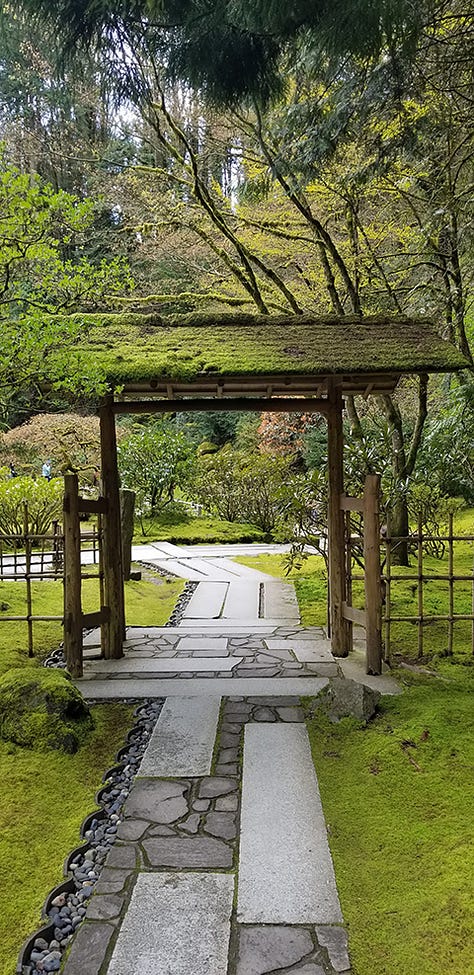

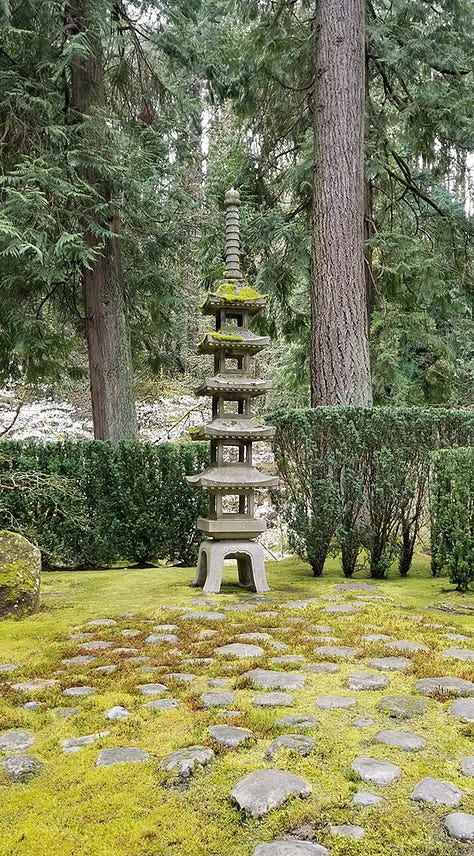
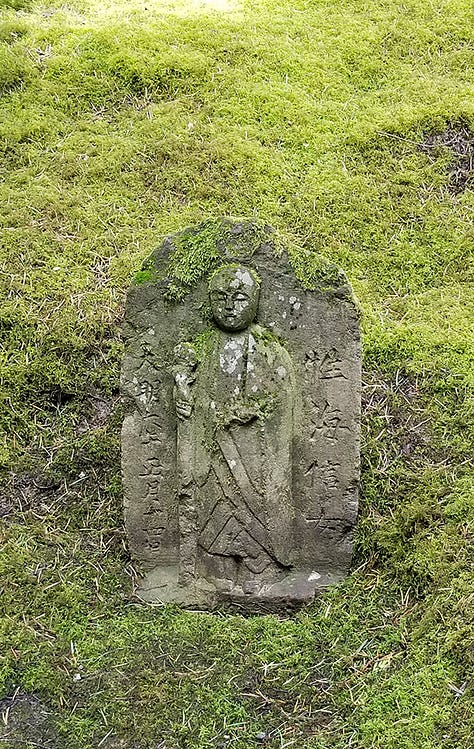

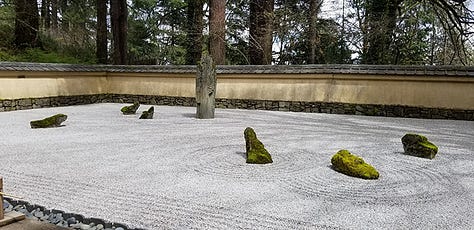

Right now the cherry trees are in bloom and their pink petals flutter down on soft breezes. It’s truly magical.
Creators to follow
I’ve been more active on Instagram lately (you can follow me there!) and my nightly ritual now includes watching reels of artists creating cool things (along with hilarious reels of pandas being panda-rific and dogs and cats being their delightful selves). This week I stumbled across a textile artist who makes stunning and elaborate fiber sculptures.
Look at them! They are incredible! I love the mix of colors, the array of geometric shapes and contrasting textures. The artist’s name is Vanessa Barragão and you can follow her on Insta or learn more about her process on YouTube.

Other (secret!) projects
I can’t say too much right now as these projects are still under a veil of self-imposed secrecy, but I plan on sharing more information soon. What I can say is this: These projects are not publishing-related but they are writing-related and focus on a niche hobby I adore. I mentioned them briefly in my previous newsletter! I’ve been developing these side projects for a while now and am nearing the finish line on one of them, so keep your eye on this space in future newsletters!
Haku of the week
This is Haku. He thinks you’re amazing and he hopes you have a fabulous week!
Thank you for spending time with me <3
Not that becoming a local hedge witch of wild-foraged teas would be a bad thing. I have it on my list of future career paths to explore.
My first novel was pantsed completely, resulting in a 130K word MG novel that took me three more years to rip apart and rewrite into a completely different story. Not the best use of my time!
“When writing a first draft, I have to remind myself constantly that I'm only shoveling sand into a box so later I can build castles.” - Shannon Hale, Newberry Award winning author, via twitter.




